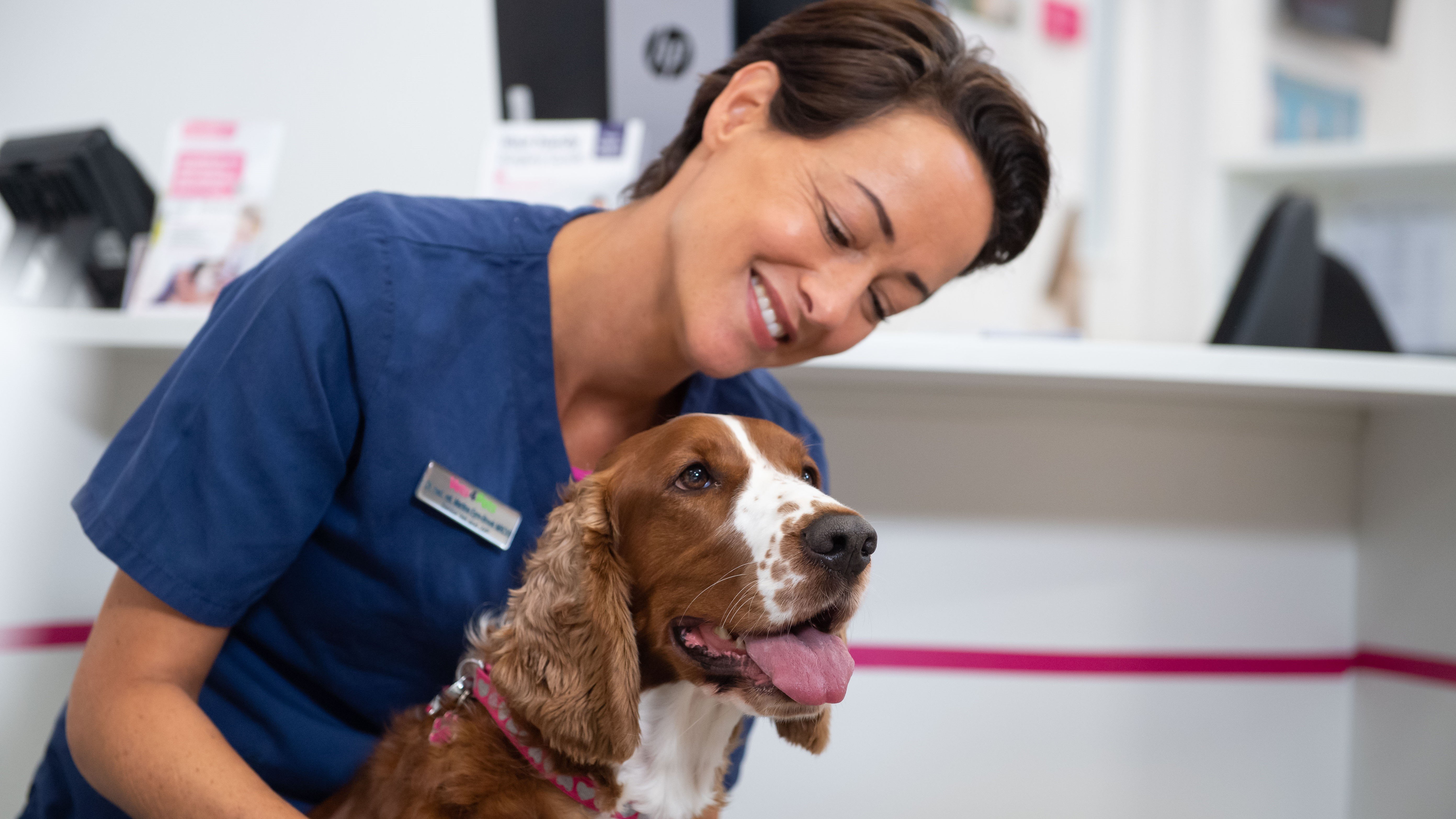
Dog microchipping
All you need to know about microchipping your dog
A microchip is a small electronic device about the size of a grain of rice. The microchip is inserted under your dog’s skin, between their shoulder blades, via a quick injection. Once inserted, a dog cannot feel the microchip and the special capsule around it means that it does not break down and is designed to last your pet’s lifetime.
The microchip is coded with a unique number that can be read by a scanner. Microchips do not store personal data – this is kept against the unique identification number on a secure database. If your dog is found and scanned, the microchip database is accessed online and the organisation that has your dog, for example a veterinary surgery, a rescue centre or the police, can use the number to find your details. You can then be contacted and your pet safely reunited with you.
Book a microchipping appointment
If you need to update your dog's microchip details click here.
More about microchipping your dog
Although no one likes to think of their dog getting lost or stolen, unfortunately it does happen, as each and every year some 250,000 pets go missing. Collar identification tags are a legal requirement for dogs but are not the best solution in themselves as they can fall off, break, or be removed. Microchipping is a permanent solution that greatly increases the chances that a lost dog will be reunited safely with their owner. If a dog is stolen and recovered by authorities, a microchip might also provide the only means to identify and contact the owner.
There is also a legal requirement to microchip your dog. From 6th April 2016 all dogs in England, Scotland and Wales must be microchipped and registered by the breeder on an authorised database by the time they are 8 weeks old, and before they transfer to a new keeper. The new keeper must then register the dog in their name and keep their details up to date. In Northern Ireland, since April 2012, all dogs held under an individual dog license have to be microchipped. Dogs who are likely to travel abroad on family holidays will also need a microchip as part of the required identification to receive a Pet Passport.
A qualified microchip implanter will place the microchip under the skin between the shoulder blades of your dog. All vets and nurses are qualified to implant microchips, and many pets have their microchip implanted at the vets. The procedure is very quick, and most dogs experience little to no discomfort. It is very important to have microchip implantation done by a qualified individual as complications can arise if performed incorrectly.
The microchip only needs to be placed once as it is designed to last for the life of the dog.
All dogs from breeders should come already microchipped, and you simply have to change the details linked to the chip from the breeders to your own. Puppies must be microchipped by the time they are eight weeks old. Rescue centres also microchip any microchipped animals as standard.
If your dog is currently not microchipped, it is important to get this done as soon as possible.
If you have a new puppy, why not take a look at our Pet Health Plans? A microchip is included with our Best Start in Life pack, along with lots of other extras.
Any time your personal contact details change, including details such as your mobile phone number, you must update the microchip company with your new details. Changing your details at your vet will not change your microchip details, as these are held by a separate company. This is the same if you rehome an animal that is already microchipped.
The physical chip does not have to be touched, but the unique 15-digit number needs to be assigned to your details rather than that of a previous owner.
It is your responsibility to contact your microchip company to change details, but your vet can help you if you have lost your pet’s microchip number or are not sure which company your pet’s microchip is registered with.
How to change ownership of a microchipped dog:
- Determine the manufacturer of your pet's microchip. This should be on any microchip paperwork you hold.
- Determine which database holds your contact details.
- From your dog's microchip paperwork, or from the microchip company's website, find out which database your pet's microchip is registered on. Each microchip manufacturer contracts with a specific database.
- NOTE: If you do not know either the database or the manufacturer, these can be determined by the chip number prefix (the first part of your dog's microchip number) which is each unique to a certain database. If you also do not know your pet's microchip number, contact your vet to see if they have this information stored, or arrange to have your pet brought in to be scanned so you can get the number.
- Fill out the change of details form. Each database will have a form you can fill out which will allow you to change your details. This may incur a small cost.
Update your dog's microchip details here.
Sometimes, pet owners think that once their pet has been microchipped, they will be able to track where they go. Unfortunately, this is not the case! The microchip is simply an identification tag.
It is a horrible experience if your dog goes missing, but there are some important things that you can do:
- Tell the microchip database where the chip is registered immediately
- Contact your vet, local vet surgeries and rescue centres in your local area and leave your dog's details (including their chip number) with them
- Ask your neighbours to keep an eye out for your dog, and look for your dog on your regular walking routes
- Send out a Lost Pet Alert on the VIP club app to other app members in your local area. The VIP club app (and the Find my VIP service) is free.
- Put up posters in your local area with a good photo of your dog and your contact details. You can create a Lost Pet Poster for free within the VIP club app.
- Use social media to post about your missing dog and ask your friends, neighbours and local forums to share the post. You can also create a social media post within the VIP club app.
As pet owners, losing a pet is right up on the list of things we don’t ever want to think about happening. However, it is a sad fact that many pets go missing every year.
Almost all pets can be microchipped, including cats, dogs, rabbits, tortoises, parrots, ferrets and snakes. Microchips offer a more permanent way of making sure your pet is always identifiable and that you can always be contacted in the event of them being found.
Health Plans to keep your dog healthy
At Vets4Pets we offer a range of Health Plans that make essential routine treatments more affordable. You'll save money on things like annual vaccinations, flea and worm treatment and routine health check-ups.

Dog Advice
Read more of our expert dog advice to keep your dog happy and healthy.
